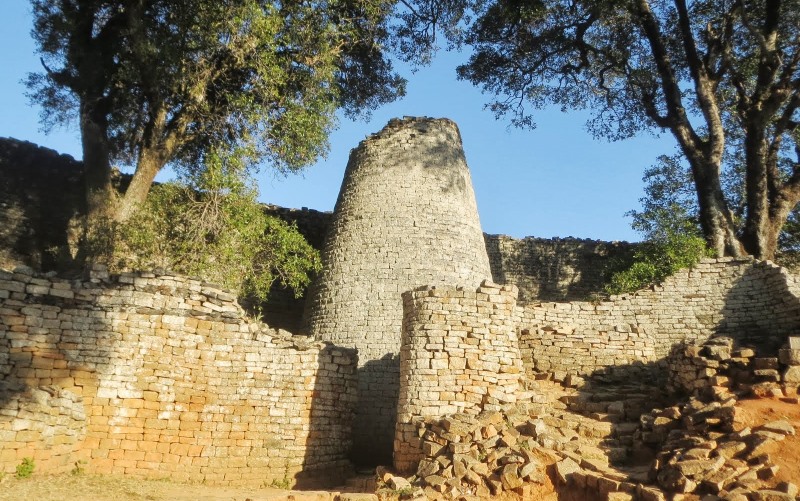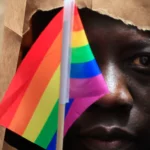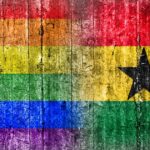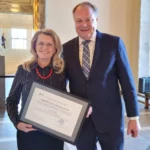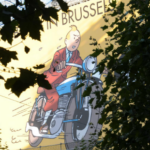By Jonathon Van Maren
More from on the road in Africa…
Traveling from place to place in Africa has been interesting. The airport in Zanzibar, for example, is perhaps the most ramshackle and rundown aviation establishment I have ever seen, and I’ve been in some pretty sketchy airports. In the bathroom, only one of the stalls had a functioning toilet, and the taps didn’t work. When I went into the airport store to grab a few bottles of water, it took me two or three tries to wake up the clerk, who had his bare feet up on the counter and was snoring softly with the occasional snort, which shifted his ample bulk on the three-legged stool he was perched on. I watched for a bit, convinced he would topple over, but it seemed that he had figured out some mysterious equilibrium invisible to the human eye.
I noticed something else, too—women wearing burkas took their face-coverings off when they entered the airport, without fanfare or complaint. For all the manufactured outrage over the niqab and burka during the 2015 Canadian election, it seems that in actually Muslim areas this issue simply doesn’t come up.
****
The buses in Zimbabwe, however, definitely take the cake. To get from Victoria Falls to Bulawayo, we bought tickets for what was advertised as the best bus available. It looked and smelled like a perfectly reasonable vehicle, as well—there were no chickens, and people sat in actual seats rather than on a sweaty pile. Three hours out of Victoria Falls, however, the bus sputtered and drifted to the shoulder of the road. After about twenty minutes, the driver identified the problem: The bus had run out of gas, even though we had already stopped at two different gas stations along the way.
The problem only got worse. The driver commandeered several rickety cars to speed off and return with jerry cans, but still the bus wouldn’t start. Now, it turned out, there was an air bubble in the gas line. The bus heated up and the stifling air finally drove the seventy-some occupants out into the nearby bush to attempt to find shade. The driver called for a mechanic, but we were situated precisely between Bulawayo and Victoria Falls, so it took him hours to arrive. Finally, about four hours later, the bus revived. The driver then turned around and headed partway back to Victoria Falls in order to pick up dehydrated passengers who had scattered in search of establishments selling water.
The bus from Bulawayo to the Great Zimbabwe Monument was nearly as bad—the advertised three-hour drive took just over six hours, as at every stop swarms of vendors would pile onto the bus, carrying baskets of sweating soda cans, energy drinks, banana bunches, and already-decomposing food. In order to persuade you to buy their food, they would thrust it just beneath your nostrils, which was an extremely effective way of causing you to lose your appetite entirely. After the driver howled and honked at them several times to get off the bus because he was leaving, and having them ignore him entirely, he would lurch towards the road, causing a squawking exodus towards the front of the bus to get off. Every minute of the trip was also accompanied with ear-drum shattering African hip-hop, which played on a loop so many times that by the end of the trip I could recognize songs and lyrics in a different language and against my will.
The news stands were all announcing “THE LAST DAYS OF ROBERT MUGABE,” so I did buy a newspaper from one of the vendors. I read a few pages—scathing criticisms of the 92-year-old dictator-president, letters to the editor complaining about hyenas, and some stupid news about Kim Kardashian, who is apparently inescapable—but when I reached the middle section I had a sense of déjà vu and glanced at the date at the top of the page. Apparently, the vendor had stuffed his 2017 newspapers with 2013 newspapers, hoping that his product would bulge more impressively. I was unimpressed.
****
The amount we’ve been on the road has made for a lot of good reading time, and one of the things I like to do whenever I travel is to buy some books from local bookstores that I’ve never read before—and probably never would. I picked up two books from the African Writers Series by Ngugi Wa Thong’o, Weep Not, Child and Devil On The Cross. The first was a stunning and beautiful book on the experiences of one family during the Mau Mau Revolution—it was so riveting I read it in one sitting. The second, however, came after the author abandoned Christianity, and a couple of hundred pages in I realized that the entire thing was going to be an apologia for Marxism. Superbly written, mind you, but the sheer preachiness of it got tiresome after awhile. I probably won’t finish it.
****
Victoria Falls, the world’s largest, longest, and widest waterfall, was an incredible sight. In the words of David Livingstone, the white churning falls that pounded to mist on the rocks below, soaring back up into the clouds to create “the smoke that thunders,” the Falls were a “scene so lovely they must have been gazed upon by angels in their flight.” David Livingstone, the British missionary, is celebrated everywhere here. An enormous statue of him stands just before the Falls, and when we crossed into Zambia to visit the city of Livingstone itself, nearly everything was named after him. This is in stark contrast to the once-famous explorer of Africa Henry Morton Stanley, who uttered the famous phrase, “Dr. Livingstone, I presume?”
Livingstone, one Zambian local I chatted with for awhile explained, was a good man who fought the slave trade and genuinely loved the African people. The only stain on his legacy, from his perspective, was that many of the missionary outposts he established were used by the colonizers when the Scramble for African began. Stanley, on the other hand, was the most celebrated explorer of his day, but is now known for his extraordinary cruelty to the Africans he press-ganged into being porters on his cross-continental treks and his collaboration with Belgian King Leopold II in eventually setting up what amounted to a genocidal slave state in the Congo.
****
If there’s one thing that locals in Zimbabwe hate, it’s their country being defined by Robert Mugabe. It’s kind of hard to escape the old man, though—portraits of him are everywhere, and an enormous rendering of his face is the first thing you see when you get off the plane. But tourism in Zimbabwe has suffered enormously over the last two decades because the only thing most people hear about is the political turmoil and oppressive leadership, leading most travellers to opt for safer-sounding destinations. According to a number of international watchers, this has actually had an enormously negative impact on the Zimbabweans who worked in tourism, while having little to no impact on the government being boycotted. Many natives have left the country looking for work in South Africa and elsewhere, creating a brain drain that is hurting the country further.
I found Zimbabwe to be very safe, provided you don’t travel anywhere at night. The people speak English better than anywhere else in West Africa, they are extraordinarily friendly and eager to help, and the country is beautiful. I saw no signs of the violence I read about in Western newspapers, with the possible exception of burnt-out cars scattered at regular intervals alongside the road.
****
The Great Zimbabwe National Monument, which is about a three-hour car drive (six hours at least by bus) outside of Bulawayo, is one of Africa’s best-kept secrets. The site of the largest ancient ruins in sub-Saharan Africa and with towering walls, pathways, and stonework rivaling that of Machu Picchu, it was once rumored to be the fabled location of the Queen of Sheba’s gold. The guidebook Charmaine and I bought at the site put it this way:
The year was 1200 AD. Europe was emerging from the decay and despair of the middle ages and had yet to set forth on her conquests in America, India, Australia, and Africa. Pope Innocent II was about to launch the Fourth Crusade, spelling the end of Constantinople and the great Byzantine Empire. Far to the east a 38-year-old named Genghis Khan was preparing to unleash his Mongol hordes on an unsuspecting Asian continent. Almost unnoticed by the rest of the world, deep in the African interior, a great city of stone was rising amongst the granite hills and wooded valleys of what is present-day Zimbabwe. For more than three hundred years this settlement thrived and grew as the capital of a vast cattle, gold, and ivory trading empire. At its peak, it was one of Africa’s most eminent cities with twenty thousand people living within sight of its towering walls. Arab and Swahili merchants brought beads and textiles from the Middle East and ceramics and glassware from Asia. Priests and prophets conducted rituals within the stone enclosures while from high upon a tumbled granite fortress…wars were waged, art and architecture flourished, dynasties reigned and were overthrown.
We don’t know much about the people who lived here—not even the names of the estimated eight kings who ruled before the city was abandoned three hundred years later. But the site itself is magnificent, and has been declared a UNESCO Word Heritage Site rivalling the Pyramid of Giza and the Great Wall of China. If only more people knew it existed, our tour guide told us, then perhaps more people would visit Zimbabwe.
To be continued….


